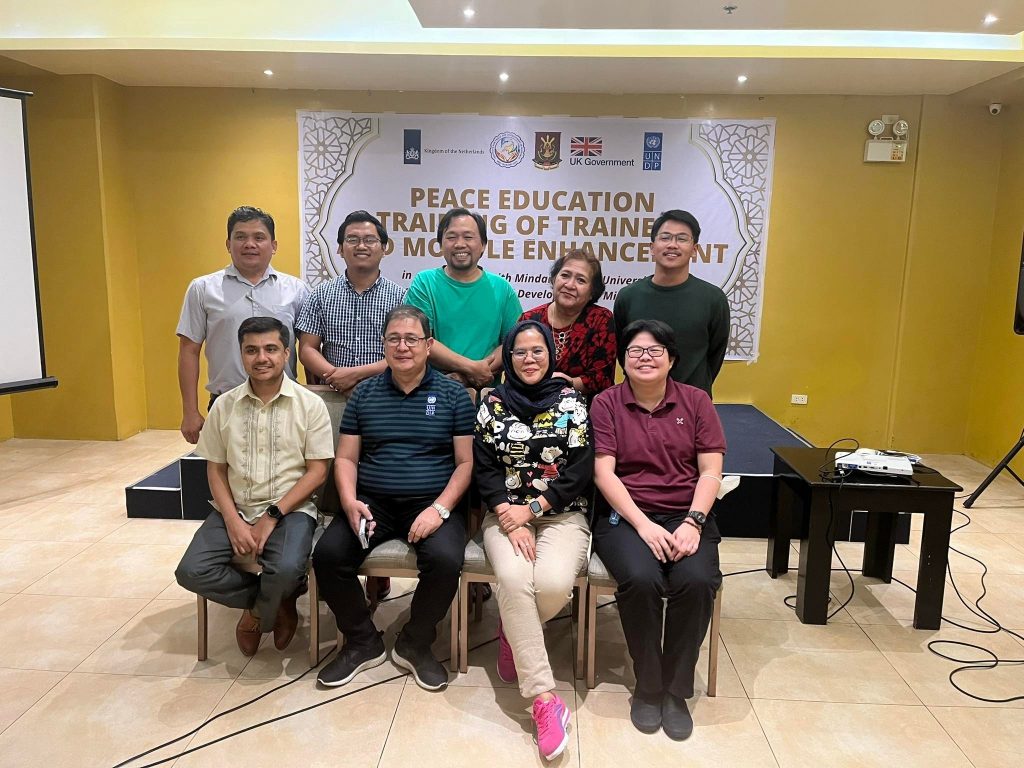Dr. Acram A. Latiph
Institute for Peace and Development in the Mindanao, MSU Main Campus, Marawi
In our aspiration to make the MSU System as the National Peace University of the country, the Institute for Peace and Development organized the Peace Educators Training and Workshop at the New Dawn Hotel, Cagayan de Oro City, Philippines. The Peace Education is fully funded by the United Nations Development Programme, the Kingdom of Netherlands, and the UK Government.
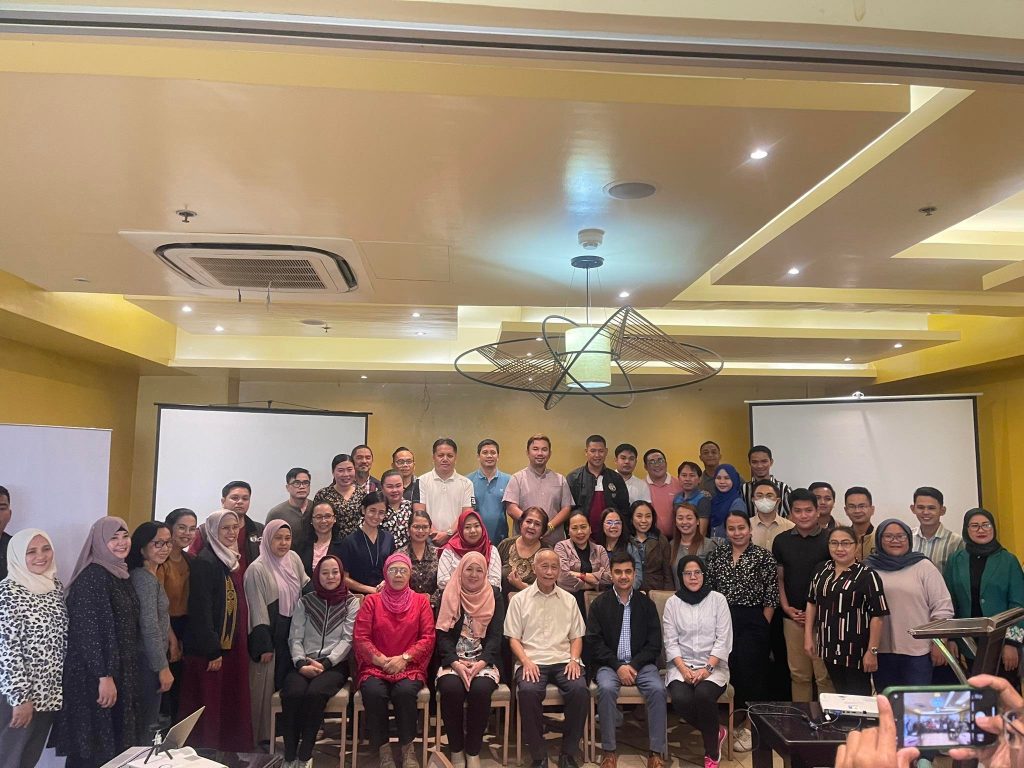
A total of thirty four participants (34) from various campuses of the Mindanao State University System; two (2) participants from the National Commission on Muslim Filipinos; two (2) participants from 500CEB of 103rd Brigade; and one participant (1) from the Office of Peace and Development of the Province of Lanao del Sur; twelve (12) Resource Persons; and six (6) Project Team Members.
The Project Team composed of Dr. Acram A. Latip (Project Team Leader), Mr. Mouhammad Sharief (Project Coordinator), Prof. Raihan A. Yusoph (Documenter), Prof. Nassif S. Talal (Documenter), Prof. Corazon E. Mangelen (Secretariat), and Prof. Johara Alangca-Azis (Secretariat), arrived in New Dawn Hotel on March 3, 2023 in preparation for the “Peace Education Training of Trainers and Module Enhancement.” The participants from the MSU-Tawi-tawi, Sulu, Maguindanao, and Gensan arrived on March 2, 2023. The activity started at 10:30 AM with a collective prayer led by Radam J. Yusop and Philippine National Anthem led by Dr. Godiva Rivera. The master of the ceremony, Dr. Johara Alangca-Azis has taken the stage to formally start the program with the rationale of the Judith de Guzman, the Peacebuilding Project Manager on Peace and Stabilization Team of the UNDP Philippines. Dr. Guzman has introduced the rationale of the activity. This was followed by an activity called ‘Human Bingo’ facilitated by Dr. Johara Alangca-Azis. After the activity, the first resource person was formally introduced, Archbishop Antonio J. Ledesma, S.J., the Archbishop-Emeritus of Cagayan de Oro City.
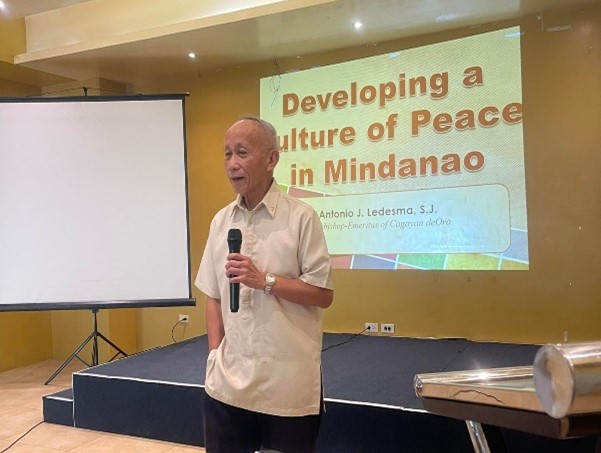
Archbishop Antonio J. Ledesma, S.J., the first resource speaker, “Developing a Culture of Peace in Mindanao”. He started his lecture by emphasizing the six dimensions and operative values in promoting a “Culture of Peace” he defined it as: “A Culture of Peace is a way of life. It is based on respect and protection of every person’s human dignity – regardless of race, religion, class, etc. Six dimensions are covered together with their operative values.” Furthermore, later in his lecture, he elucidated the Six S’s for peace in Mindanao which is sincerity, security, sensitivity, solidarity, spirituality, and sustainability. And he emphasized that both Muslims and Christians aspires peace and that All-out-war in Mindanao was not the answer to the Mindanao situation. At some point in his lecture, he has also mentioned efforts of the Philippine government to disarmament and cessation of hostilities. He then mentioned that there was a need to developed among stakeholders to conflict resolution, peace negotiation; active non-violence as response to injustice; against proliferation of firearms and acts of violence against person, and property.
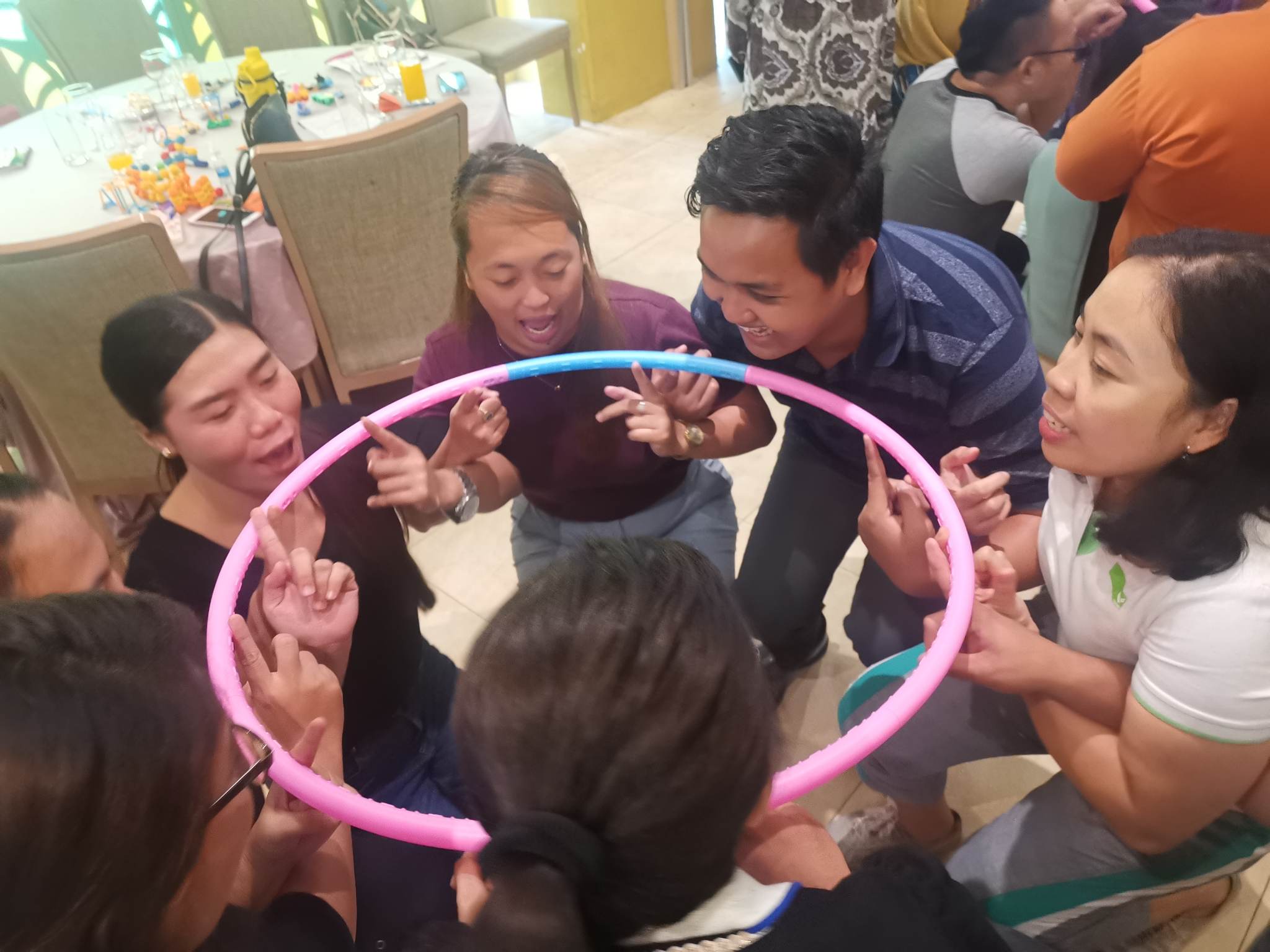
Dr. Mario Aguja, the second resource person, talked about “Strengthening Peace Education in the MSU System (to become the National Peace University”. Dr. Aguja has emphasized that, “we are not doing peace education just to offer it but it is part of our effort to become a national peace university.” He started his presentation with the geographical background of Mindanao especially the Bangsamoro Autonomous Region in Muslim Mindanao (BARMM). Saying, “Let me start from where we are today.” At the end of Dr. Aguja’s lecture, he highlighted what needs to be done to be the national peace university. “The challenge now in MSU system is not just about quality instruction, research, and extension but meaning community engagement.”
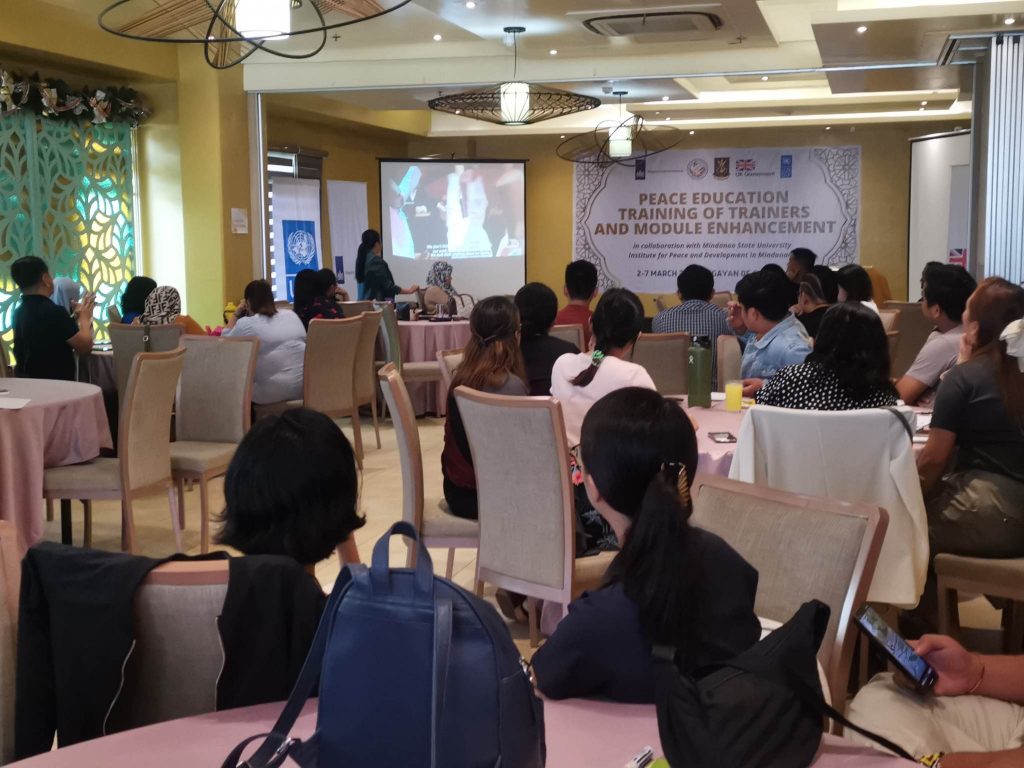
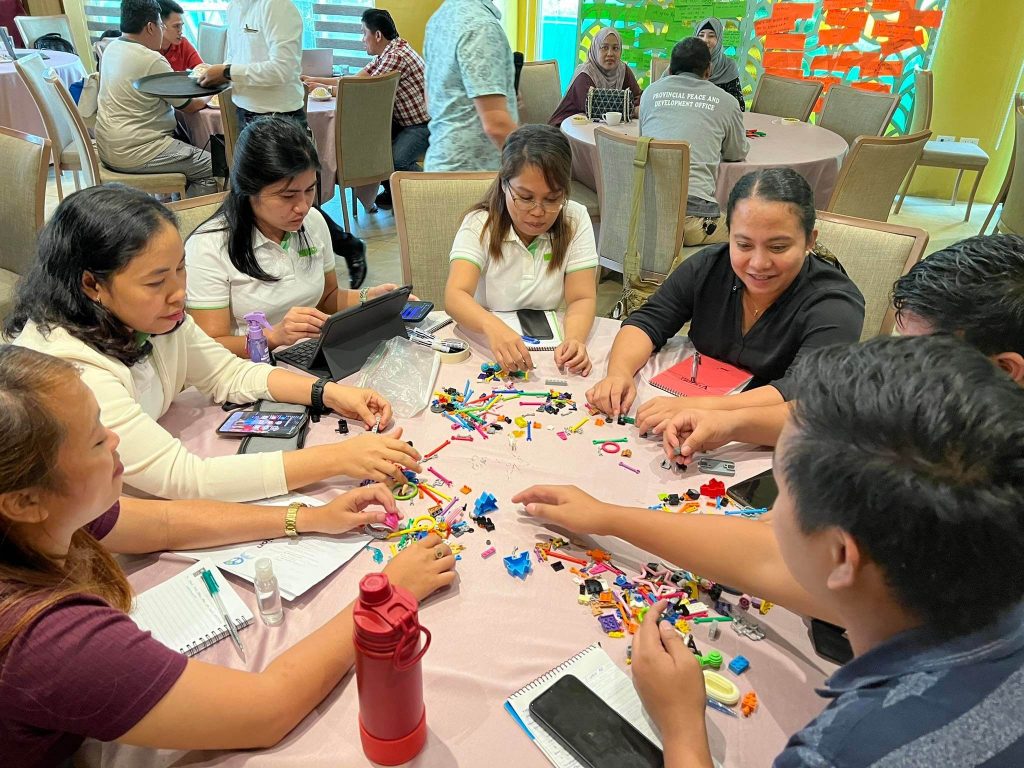
Dr. Loreta Carlos, the third resource person, talked about the “A Peace Education Overview: Why, What and How.” Dr. Loreta’s introduction was to acknowledge MSU system efforts to serve the cause of peace, with its FPE101 course offering as a trailblazing initiative in the country. She has mentioned that in June 2018, she joined planning the FPE101 course and in the following year, I worked with MSU-VPAA for the peace education trainings for the 11 MSU campus’ faculty members. In addition, Dr. Loreta emphasized 3 parts in her lecture. First is the WHY. However, she stated that she will not discuss this extensively due to the fact that it was discussed or somewhat addressed by other speakers. Second is the WHAT which is the fundamental knowledge base, skills, and value orientation that comprise peace education. And lastly is the HOW, which is the holistic educational process (not specific teaching techniques) & selected good practices aligned with peace education. Dr. Loreta Carlos ended her presentation at 4:16 PM with this photo. Saying that this is an image of an unnamed girl whose t-shirt message expresses a peaceful & inclusive perspective.
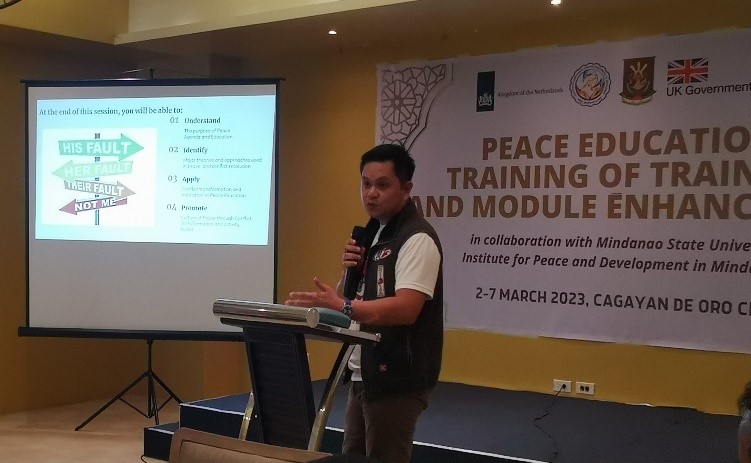
Prof. Almahdi G. Alonto, the fourth resource person, talked about the “Peace and Conflict Transformation.” He began with the quote, “tell me and I forget, teach me and I remember, involve me and I Learn.” With this quote, Prof. Alonto gave the participant a slight overview of his lecture. In his introduction, he shown the 5 parts of his presentation which are the: Introduction, Peace Education, Conflict Resolution, Conflict Transformation, Workshop and Conclusion. He also introduced his objective in discussing the topic. At first part, Prof. Alonto asked the question, what do peace educators teach about? How do we teach the peace manual? He emphasized that there is a need for the teachers to be updated with the current approaches to teaching Peace Education in Mindanao and to ensure that the quality of peace education offered is responsive and reflection of the student’s aspiration and their community. Prof. Alonto has said the common statement, “You cannot give what you don’t have”, which means if you do not have peace with yourself, then there is a problem. Peace starts with you. Prof. Alonto suggested that we need to strengthen ours MA Peace Program and Peace Education vis-à-vis research with the stakeholders (student, faculty, system wide, and communities); to imbibe the culture of peace in academe and open to legitimate self-criticism that allows transparency and accountability; and lastly, Positive Education must be brought to community level to ensure the positive peace impact.
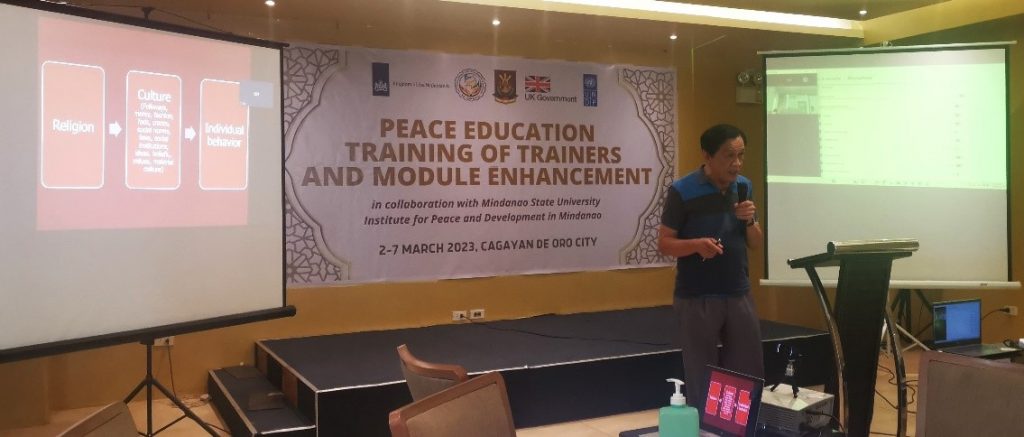
Dr. Moctar I. Matuan, the fifth resource person, talked about the “Interfaith and Intercultural Harmony.” Dr. Matuan started his lecture by discussing the historical background of peacebuilding in Mindanao. Citing names including Aleem Ilias and Bishop Capalla who are considered as one of those firstly initiate peacebuilding particularly, interfaith-intercultural harmony. According to Dr. Matuan, individually, each of us has unique history, character and personality brought about by our inborn qualities and those that we acquire as we grow and participate in the larger society. Dr. Matuan emphasized that religion is so influential that it can be a step for changes in the culture of the people.
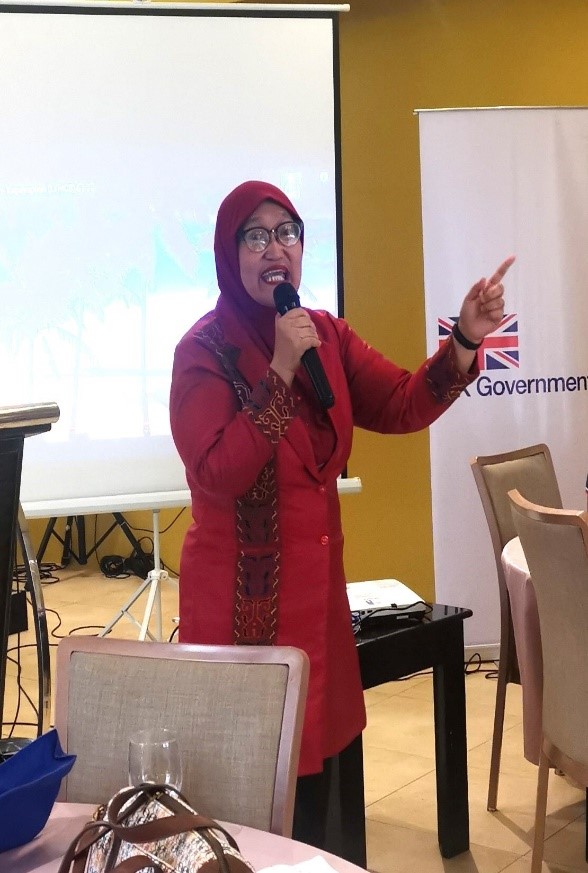
Dr. Latiph-Yusoph, the sixth resource person, talked about the “Peace Communication.” She emphasized Peace Communication practice create “interventions” or “communication campaigns” to mediate between peoples in conflict through all available communication and media means. Dr. Latiph-Yusoph stated that communication is a medium of peacebuilding. In my community in Saguiran¸ we engaged with them through having family development activities. Most of us children do not have a time to communicate due to hectic schedule and gadgets. Peace communication as practice, creates interventions.
Dr. Mark Anthony Torres, the seventh resource person, talked about the “Games as Structured Learning Experience in Learning Peace.” Dr. Torres started his workshop with a game. A ball game that would eventually turns out like a concept of class environment where in the design of the game would be bias in a sense that only the yellow team will always won because it has only few balls to finish. Dr. Torres has said that the use of games can motivate, active learning, and immediate feedbacks from the students. This is to build a concept of plurality because students has different interpretations with the games. The more years of teaching the more the richer in terms of how you process. The challenge now in the FPE101 at IIT is that we don’t have the narratives. We need knowledge management. We need to establish to the students especially those learners who are intelligent that they should not be always in the debate mode. One of the challenge is that while we are teaching FPE101, students came across with terror teachers or even staff.
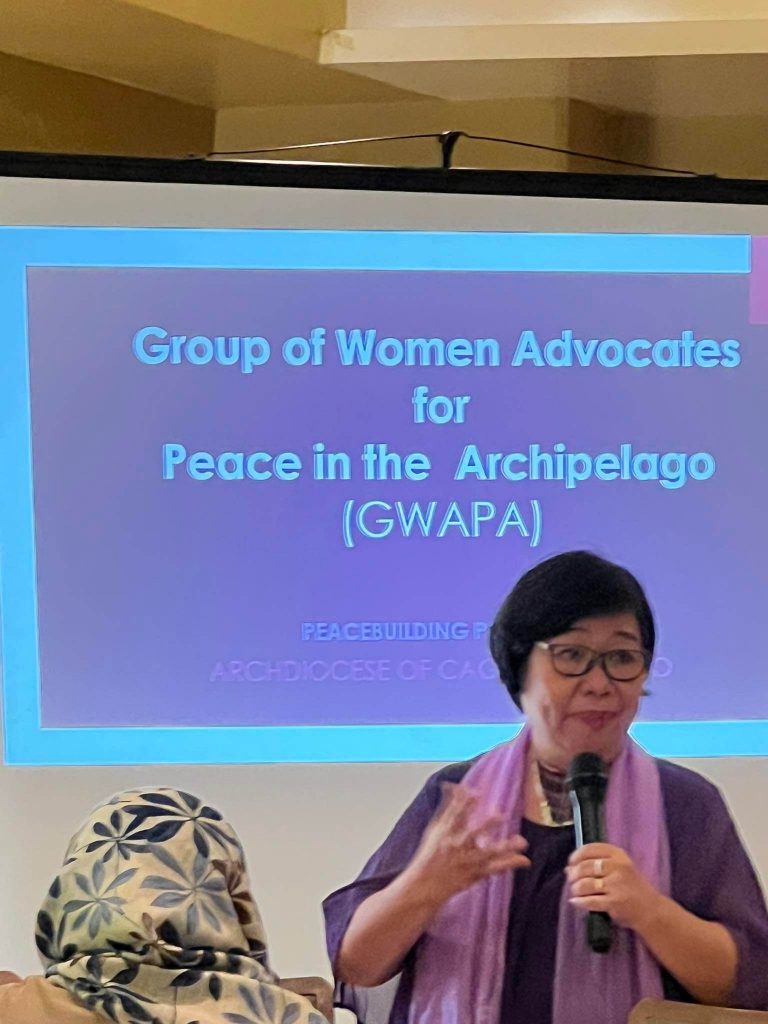
Prof. Myrna Siose, the eight resource person, talked about the “Group of Women Advocates for Peace in the Archipelago (GWAPA).” She started her presentation at 8:48AM in sharing her first time coming to MSU-Marawi to give insight about the MSU-Wide training module manual for a culture of peace in 2006. Part of our effort is to promote peace like naming places into peace plaza and peace garden. Actually, MSU has a big part in creation of the GWAPA. I was then part of different peace process, whenever there is a conflict issues, we convene to make a plan to solve itProf. Myrna ended her lecture at 10:24 AM saying that, “though there is a continuing challenge and invitation for all women. At home, men are there when women like us are here. In supporting us. We really need to acknowledge them (men).
Dr. Aminoding Limpao, the ninth resource person, talked about the “Personal Peace and Mental Health.” Dr. Limpao asked the participants with this two questions: Whom am I? and Why I am here? And he instructed the participants to write it down to meta-cards and told the participants not to open to other participants. Dr. Limpao emphasized in his discussion the Self is a source of conflict. With this, he discussed nine aspects of the self that may be a source of conflict. He said that conflict is a long process. Though individuals knew what is right thing to do but still often commit mistakes. And usually, there are symptoms why people are not in peace. Just for instance, when you are angry, there are symptoms that an individual is anger or not in a mood to talk with others. Furthermore, Dr. Limpao stressed out the self-awareness important also because this is the ability to see yourself clearly and objectively through reflection and introspection. You want to teach peace but you are not the source of peace. r. Limpao added that until now, there are historical injustices that are not yet healed. In Maguindanao for instance, their tears are flowing like water falls when they remembered the massacres happened in their community, they feel it like it was happened just yesterday. Learned helplessness and internalized oppression. Inner peace is absent because victim-survivors justifies the violence internally. To address these conflicts is to cultivate inner peace. Teachers can’t transform or transcend peace if he do not have inner peace. We should live in a culture of peace which is the purpose of FPE101.
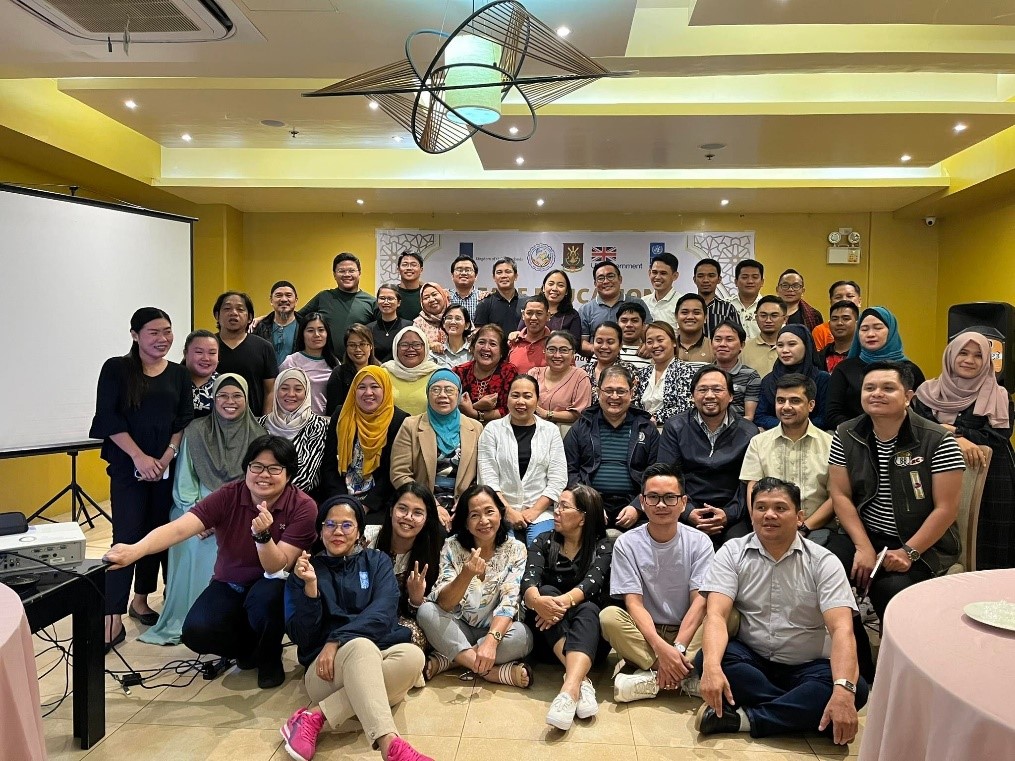
Dr. Godiva E. Rivera, the tenth resource person, talked about the “I and Other: Transcendence in Peace Education.” According to Dr. Godiva, the word transcendence is a very challenging concept in peace education. As peace is educator we are going to let our leaners into transcendence. It is the ritual, to facilitate our understanding with transcendence. One way to understand transcendence is to know the ritual. She defined Transcendence as coming from Trans (Lat in) Go Beyond and Scandare (Latin) To Climb. Hence, it means moving beyond. Transcendence refers to the very highest and most inclusive or holistic levels of human consciousness, behaving and relating, as ends rather than means, to oneself, to significant others, to human beings in general, to other species, to nature, and to the cosmos. Once you step into your classroom that is already a transcendence. Because your purpose is to promote peace. Peace is not just for change but to go beyond. We must change the way we think. Other Selves- transcendence means we go in thought beyond. We have a lots of idols in mind, prejudices, etc.
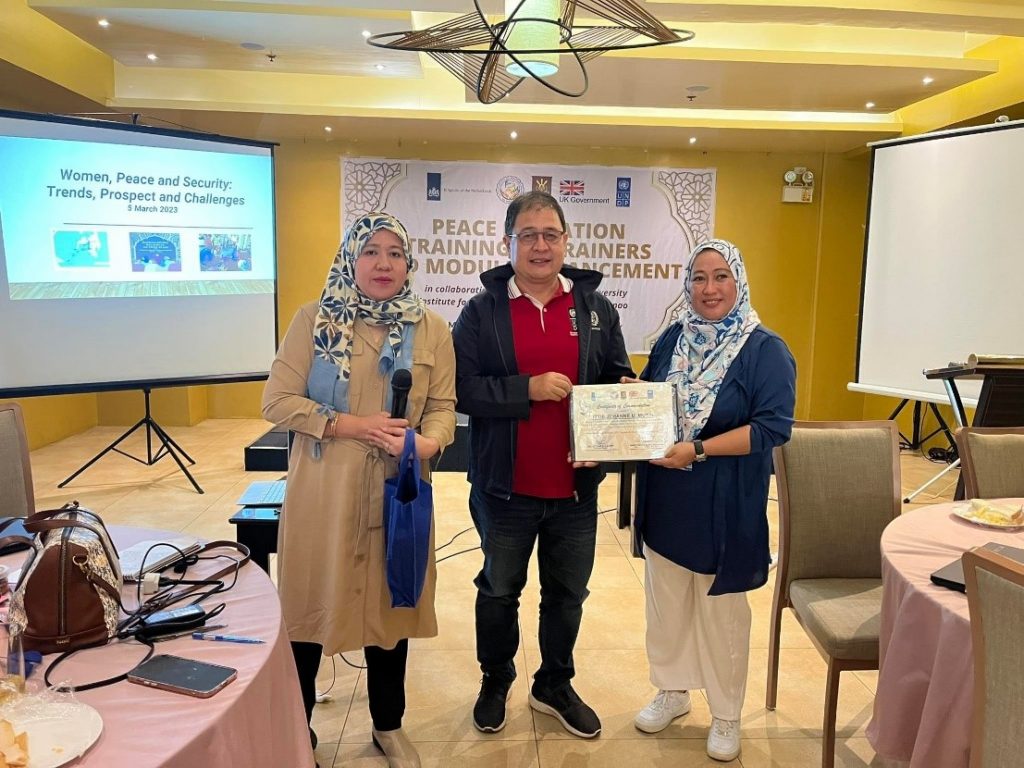
Prof. Jehanne Mutin, the eleventh resource person, talked about the “Women, Peace, and Security: Trends, Prospects and Challenges.” Prof. Mutin introduced the peace and security in BARMM and gave background to the participants. Dr. Mutin emphasized the case of BARMM is very diverse. Even cultural sensitivity is different. Talking about gender, according to Dr. Mutin, we are in 33rd rank in terms of political empowerment. Here in BARMM according to Dr. Mutin, is like “the noontime show “Maalaala mo Kaya” (if you still remember), because the story of BARMM throughout the years is coming from conflicts and now, natural calamities. People leaved their places.”
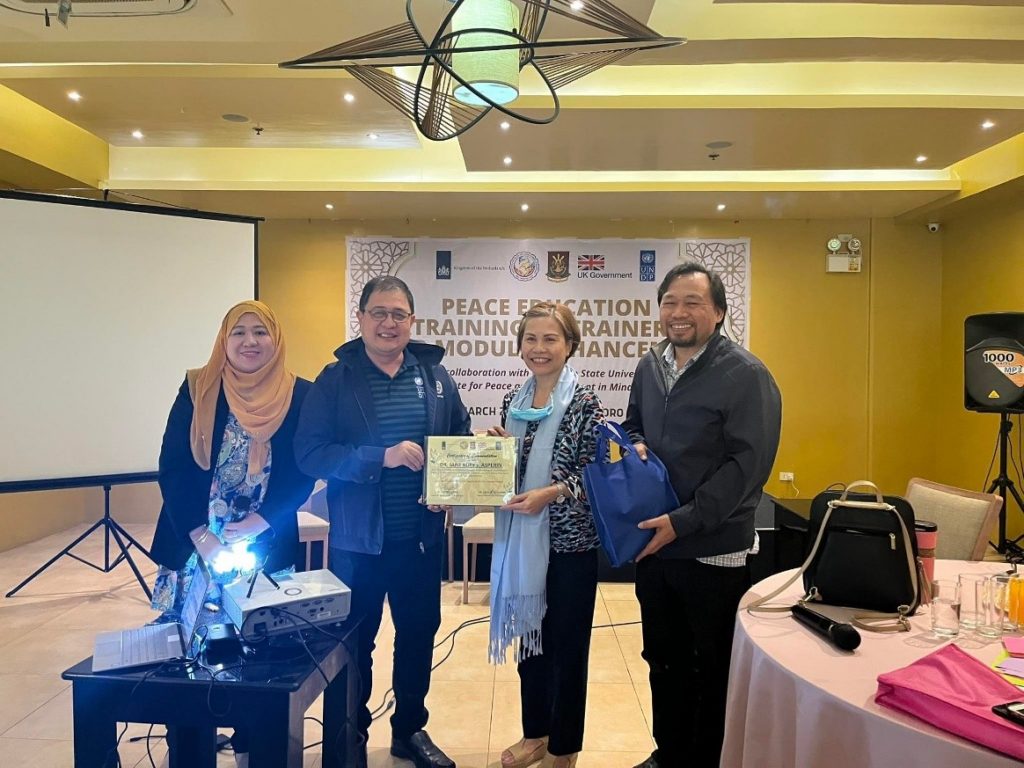
Dr. Jane Ruby J. Asperin, the twelfth resource person, facilitated the “Module Enhancement for the MSU-System.” Dr. Asperin presented that the 1st peace education manual of MSU System was created in 2009. Dr. Asperin strongly asserted that MSU system should not always look into or borrow ideas from peace studies in other countries because the establishment of BARMM has been in the eyes of various countries now such as Turkey, Cambodia, and other countries. We should let people read about the efforts of Moros and non-Moro peace builders in Mindanao like Dr. Matuan, Alim Elias, Prof. Mangelen, and others who are coming from other regions. In addition, Dr. Asperin also stressed that in the MSU-system, we are good at teaching FPE101, but she asked; are we making a difference? According to Dr. Asperin, the way to move forward is to do action and reflection. Reflection turns experience into insight and evaluated experience is the best teacher. This activity on our manual must be in a principle. Manual is not sculptured in rock, so we can be spontaneous, do not filter your ideas and we need to be open and then the secretariats distributed the guide questions.
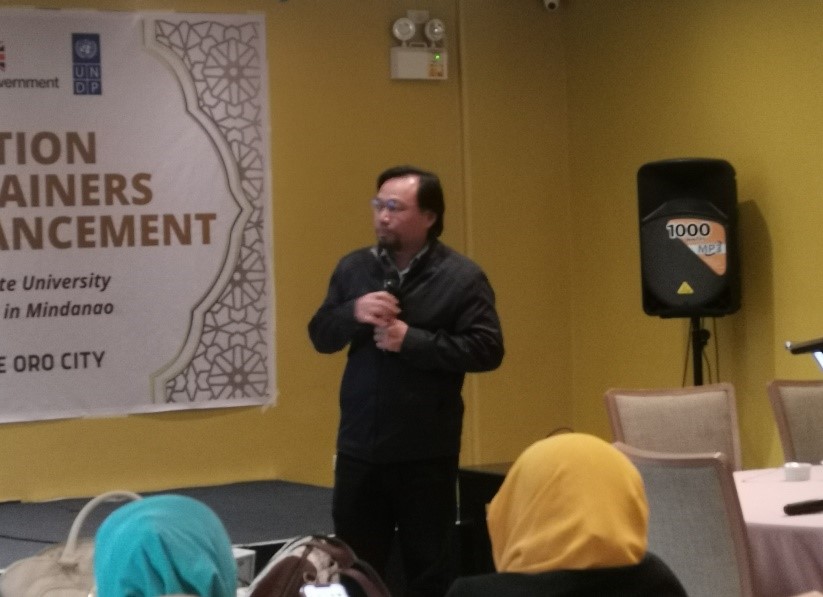
Dr. Acram A. Latiph, the Project team leader presented the “Moving Forward on Peace Agenda.” Dr. Acram introduced his presentation by emphasizing that ‘peace is an inclusive community endeavor.’ “The main thrust is to enhance the existing manual on peace because we should look into the changing landscape in education around us. For instance, peace education needs to include global citizenship. This is the future that we are looking at. If we will not do this, what will happen to us? In enhancing the peace manual, it is natural because everything that is made by man is subject to change. We are humans and we are bound to be enhanced.” Now what is the help or what are at the forefront? What we are aspiring is to have peace core who will be trained to teach not just MSU faculty members but also private schools in Mindanao. If we want to be a national peace university, we need to be a national player.
Furthermore, Dr. Acram also said that, “this is what I am looking forward because international funders like the UNDP is looking for this. If you noticed, we have our partners who are not teaching peace education like the NCMF, the Peace and development of the provincial office, and the 103 brigade men in uniform.” We invited them because this is everyone’s responsibility. Dr. Acram also highlighted that we shared resources. We strengthen the things that binds us, a collective efforts. Dr. Acram emphasized that the idea of MSU System to host the peace observatory. We need this in order for us to evaluate if our efforts are effective. International funders like the UNDP, they will able to see that we have data. And that is the legacy we can contribute to MSU in its dream to be a national peace university.
